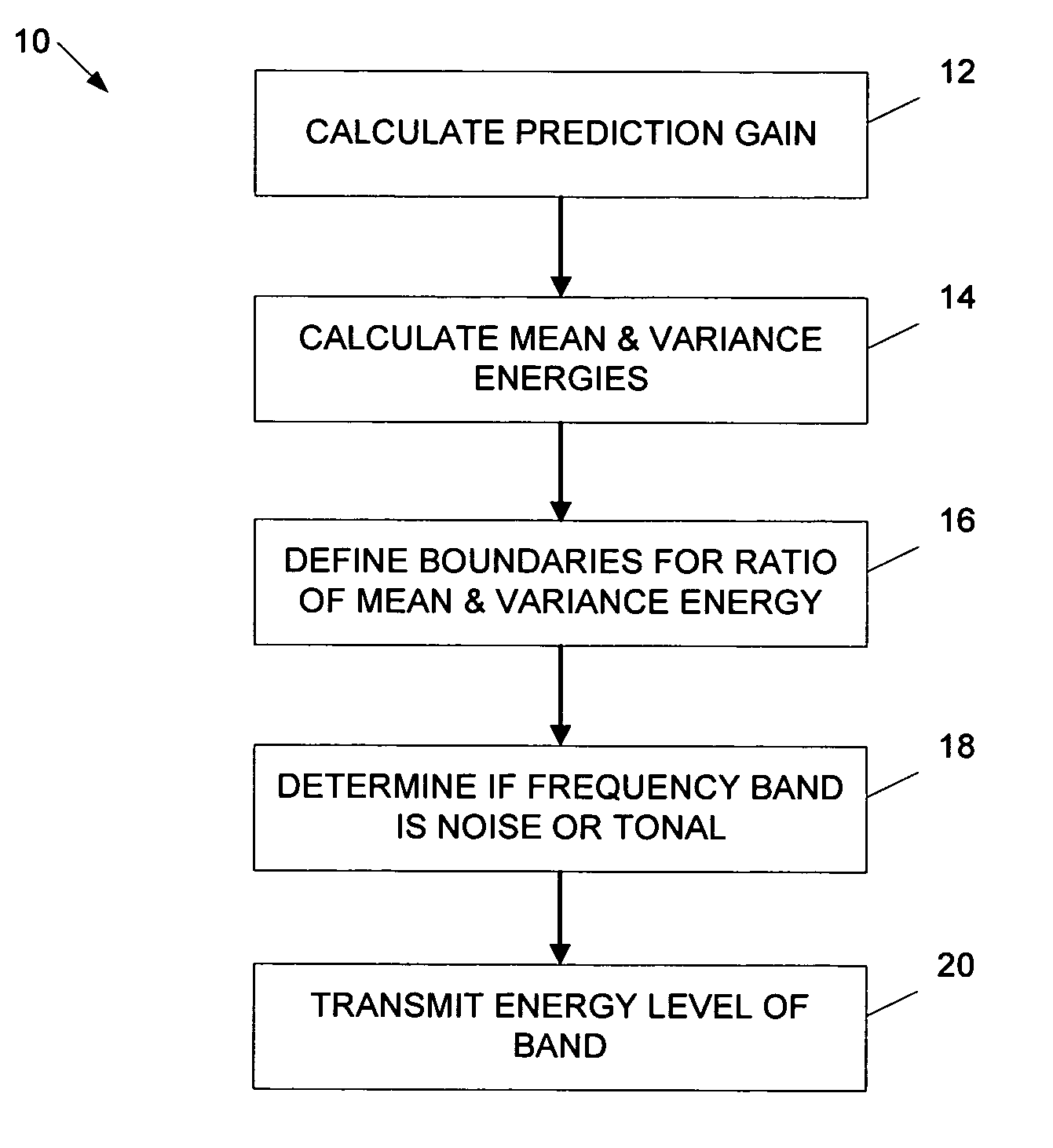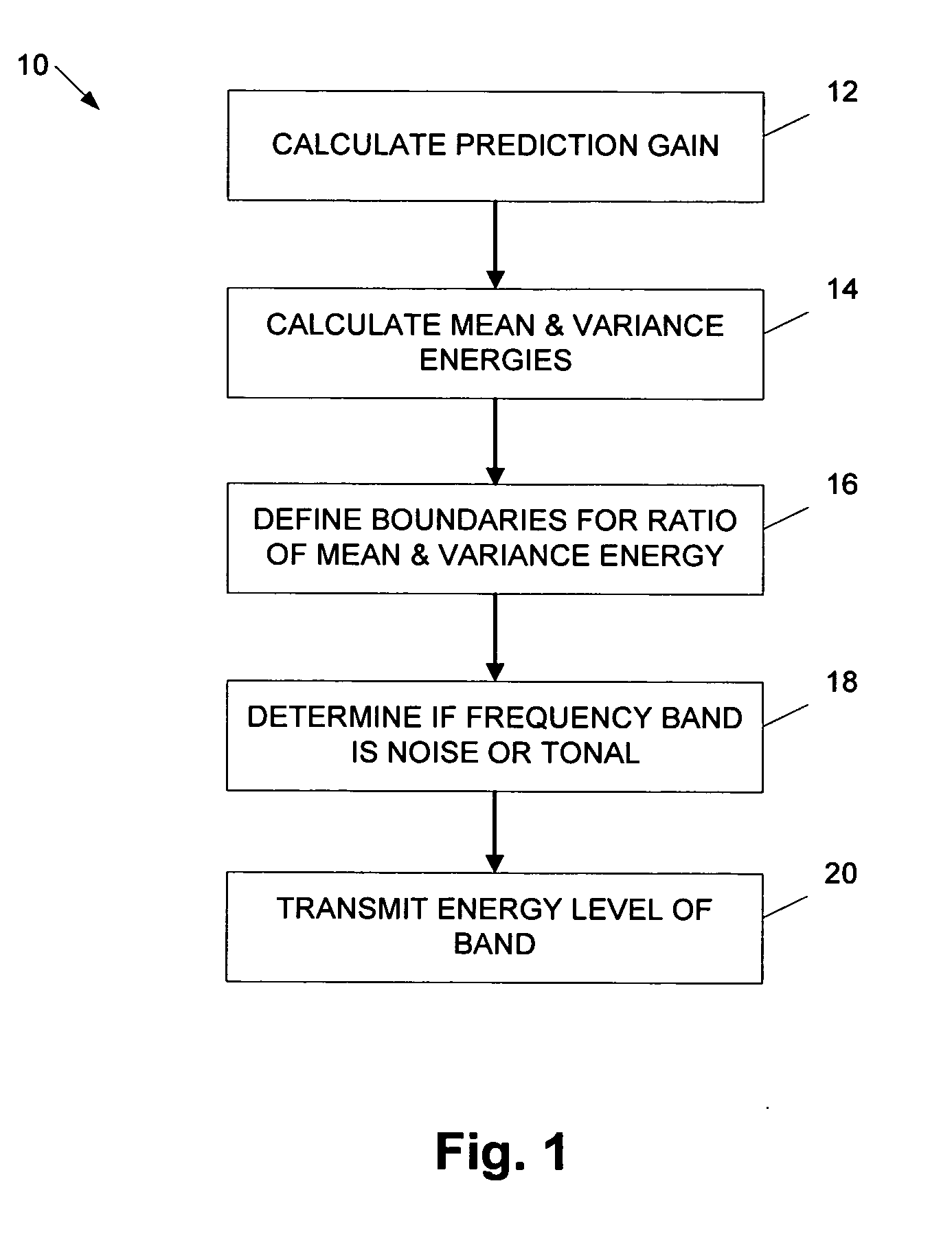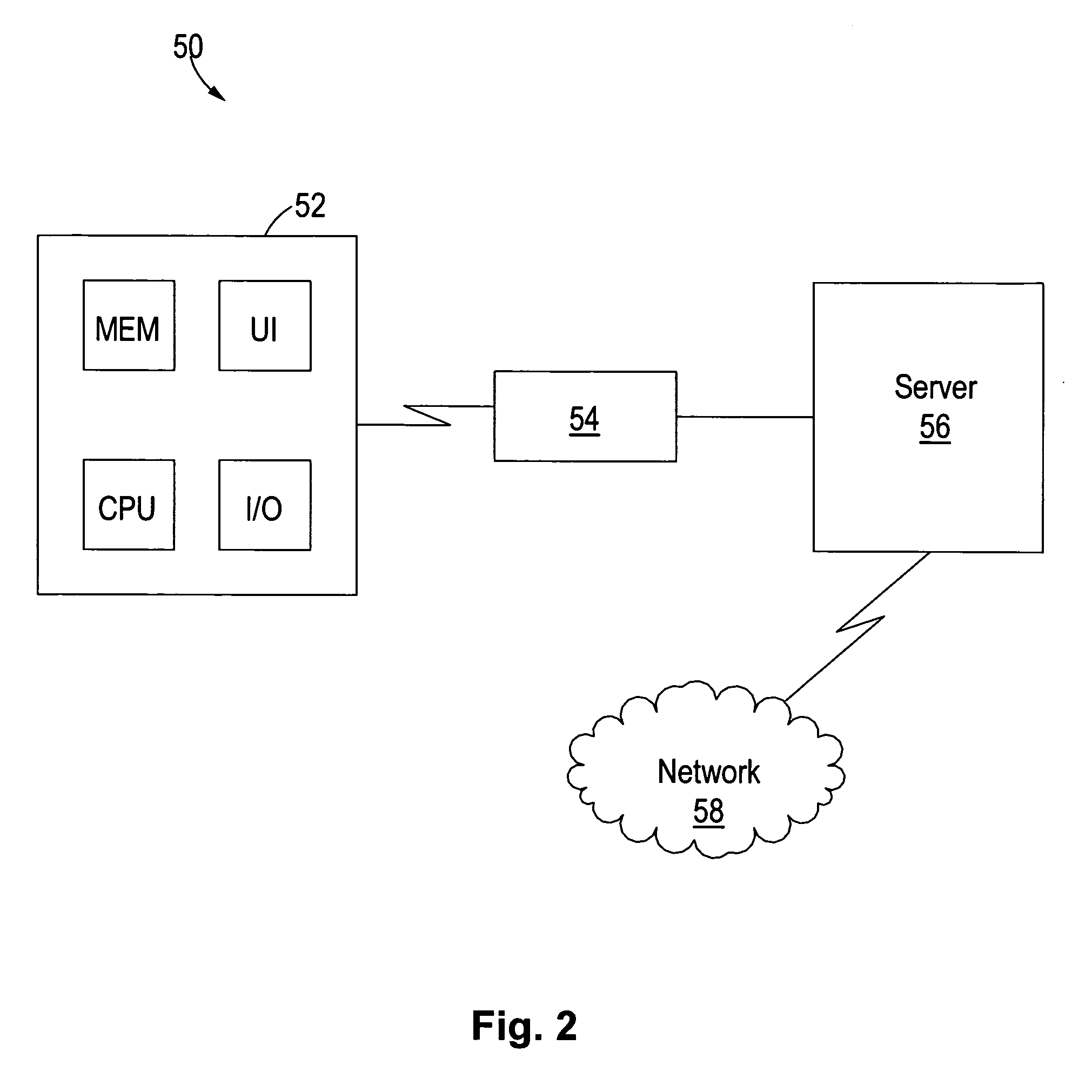Noise detection for audio encoding
- Summary
- Abstract
- Description
- Claims
- Application Information
AI Technical Summary
Problems solved by technology
Method used
Image
Examples
Embodiment Construction
[0020]FIG. 1 illustrates a flow diagram 10 depicting operations performed in the estimation and detection of noise and noise-like spectral signal segments in audio coding. Additional, fewer, or different operations may be performed depending on the embodiment. In an operation 12, a gain prediction for the spectral samples corresponding to each frequency band is calculated. In this calculation, the variable x represents a frequency domain signal of length N: x=F(xt) where xt is the time domain input signal and F( ) denotes time-to-frequency transformation. The variable sfbOffset of length M represents the boundaries of the frequency bands, which follow also the boundaries of the critical bands of human auditory system.
[0021] A gain prediction is calculated for each frequency band. In an exemplary embodiment, the prediction gain is determined by applying linear predictive coding (LPC) principles to spectral samples within each frequency band and accumulating the resulted gain across ...
PUM
 Login to View More
Login to View More Abstract
Description
Claims
Application Information
 Login to View More
Login to View More - R&D
- Intellectual Property
- Life Sciences
- Materials
- Tech Scout
- Unparalleled Data Quality
- Higher Quality Content
- 60% Fewer Hallucinations
Browse by: Latest US Patents, China's latest patents, Technical Efficacy Thesaurus, Application Domain, Technology Topic, Popular Technical Reports.
© 2025 PatSnap. All rights reserved.Legal|Privacy policy|Modern Slavery Act Transparency Statement|Sitemap|About US| Contact US: help@patsnap.com



